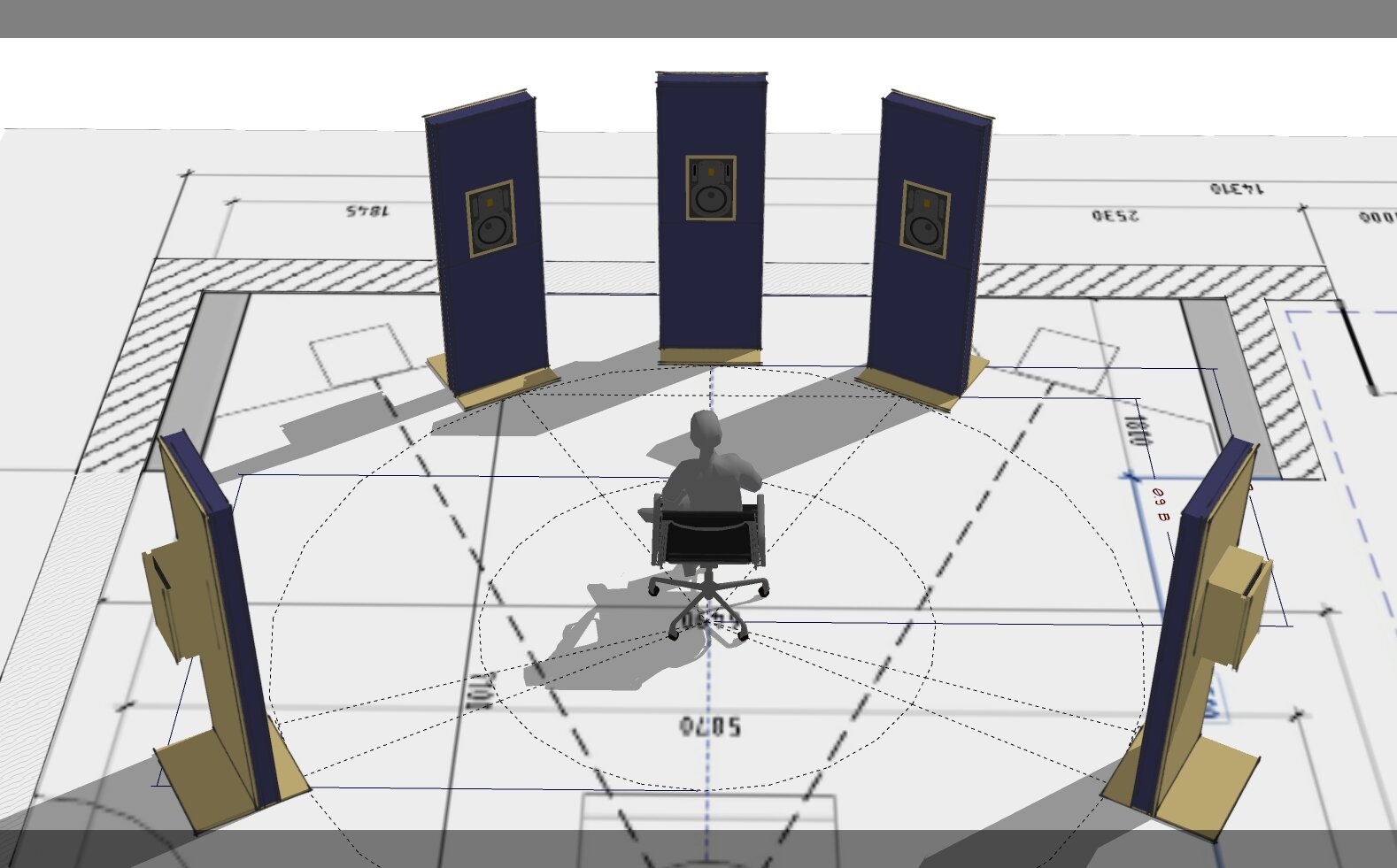-
Posts
2,297 -
Joined
-
Last visited
Everything posted by Glenn Stanton
-
i figured that was the case ? i have an inexpensive I/O - UMC1820 - using USB3 i can get to 4-6ms... depending on how many channels i'm using - drums - all 8 ch (mics) - 6ms, single guitar - 2ch (DI + amp) - 4ms. however, owing to my pc power (or lack thereof), no effects on during record...
-
using the thunderbolt or USB 2.0 on the Antelope?
-
you aren't freezing the MIDI, you'd freeze the softsynth. the big "*" button is the synth freeze. per @bdickens best to spend some quality time with the manual and reference guide to dig in and understand the features.
-
this should help: Cakewalk - Cakewalk Documentation - Signal flow http://www.cakewalk.com/Documentation?product=Cakewalk&language=3&help=Mixing.07.html
-
for me, it's one of the few tools that gets installed before any software to verify the the machine configuration and make sure things like USB ports etc are all stacked correctly to avoid interrupts (for example) on my audio I/O, etc.
-
HWInfo64 - has a sensors view.
-
HW Info ?
-

Cannot Import Files (midi & wav) from Garage Band
Glenn Stanton replied to Steve Patrick's topic in Cakewalk by BandLab
may be review the steps to export from GB? WAV files are a very well defined standard uncompressed format. so if your other audio apps cannot read them, chances are they're not right... make sure (for example) that the TYPE is WAV and not something like AIFF with a .WAV extension. or export them as AIFF and convert (which is what i do when people send me audio files from an Apple product - like Logic) to WAV. The MIDI file - may be the same issue. There are different types of MIDI files; the most common are type 0, where all information is contained in a single multi-channel track; and type 1, which puts each channel of MIDI data on its own track. Type 2 contains multiple patterns which are arranged as a song. you want (most times, Type 1). -
one thing i noticed in the reviews - heat. the 7950X without turbo was running near 95°C and recommended much larger cooling capability... intel product also running hot and thus both likely getting temperature throttled.
-

Feature Request - Pro Channel EQ Updates Needed
Glenn Stanton replied to Xel Ohh's topic in Feedback Loop
dynamic eq would be nice as well ? -
Intel Announces 13th Gen Processors: Core i9 13900K Faster, More Cores Than Ryzen 9 7950X (forbes.com) https://www.forbes.com/sites/antonyleather/2022/09/27/intel-announces-13th-gen-processors-core-i9-13900k-faster-more-cores-than-ryzen-9-7950x/?sh=da65d16328db AMD Ryzen 9 7950X Review | PCMag https://www.pcmag.com/reviews/amd-ryzen-9-7950x
-

Lesson Learned: Do not junction the VTS3 folder (Melodyne)
Glenn Stanton replied to mettelus's topic in Cakewalk by BandLab
same here - programs stay on the C: drive, as much as content - i junction to my D: drive. so i tend to be selective with things like Sample Tank, Waves, Melodyne, and a few other that if you try to do their entire folder, things get screwy. but using junctions on the content subfolders seems to work fine. -
you could try the matrix view and drop samples on the buckets there. read up on (and play with) the matrix tool as it has a lot of excellent capabilities.
-
i would try out the Ozone to remove it (in the past when preprocessing files i would use Sound Forge to kill the DC offset and set levels etc). now i mainly use RX-7 to perform my preprocessing on files.
-

issue with plugin delay on a Parallel channel
Glenn Stanton replied to Recuero's topic in Cakewalk by BandLab
its definitely something going on... i got the out of phase issue on the drums (i replaced the ez drums with addictive drums). created a blank project. set up SI-drums (everyone has those ? ) on an DRUMS audio track and MIDI (clips from project file) track. create new patch point. assigned output of DRUMS to Patch Point 1 created new audio tracks - PDRUM with Sonitus Compressor in FX bucket, and RAW. assigned Patch Point 1 to both PDRUM and RAW. created Bus A. assigned output of PDRUM and RAW tracks to Bus A. started PLAY. no phasing. turn off FX on PDRUM, ok. turn on FX on PDRUM - phasing. turn off - still phasing. STOPPED PLAY. restart PLAY - no phasing. with the Sonitus Compressor turned off, cycling the FX bucket causes the same phasing. removing the Sonitus Compress - cycling is ok, no phasing. added Wave C1 compressor - no problem. going to suggest the Sonitus Compressor is the issue. if you remove it from the original project - same thing happens - no phasing. TEST (DRMS W PATCH POINT PHASE).cwp -

issue with plugin delay on a Parallel channel
Glenn Stanton replied to Recuero's topic in Cakewalk by BandLab
OP - is it possible that you turned off the PDC during tracking to eliminate latency, and now any un-even fx timing is showing up? -
there is also this: Cakewalk - Cakewalk Documentation - Removing DC offset https://www.cakewalk.com/Documentation?product=Cakewalk&language=3&help=EditingAudio.22.html
-

Music Lyrics You Didn't Hear Correctly
Glenn Stanton replied to Tim Smith's topic in The Coffee House
then again, there are lots of recordings where what was sung is not what the lyrics sheet said as a means of circumventing the record label and radio/tv censors... ? -
i like playing chords on the bass - not only strumming but also arpeggios as i walk the chords. i find that this is useful when there are only a few instruments playing (like dynamics drop in the midrange instruments during a verse or guitar solos). one trick i found (i seldom use a pick) is to strum downstrokes with the face of my fingernails (essentially back handed) and thumbnail (upstrokes) so it's a hard surface against the strings. best bet is round wound (on my precision it sounds almost like a piano), but also works on flats (my upright EDB - i even get some nice harmonics).
-
in case anyone was interested in what the White Album played live would be like:
-

FR : Automation Follows FX Bin Drag - Copy
Glenn Stanton replied to Mark Morgon-Shaw's topic in Feedback Loop
yeah, i think the shift modifier on the ctrl-drag would be brilliant to allow easy cloning (or not) of the automation(s) assigned to the fx. ? -

Cakewalk - the only DAW with playback delay issue?
Glenn Stanton replied to Antre's topic in Cakewalk by BandLab
so, a couple of checks if not already doing them: LatencyMon to check if there are things in your system contributing to delays. also, even in the world of everything-is-usb, the underlying tech (in most cases) is still PCI or some other bus - which can be impacted by system interrupts from things like keyboard/mouse, disks, other peripherals, printers, outboard gear, etc. so using tools like HWInfo can show you the list of things connected to your USB ports and related busses and then you can restack your devices to minimise the interactions. for example, my audio i/o has the USB3/PCI bus all to itself. my keyboards and MIDI gears on a USB2/PCI, and my mouse/keyboard/iLok/etc are all on another USB2/PCI. my internal disks show up as PCI and they're separate. note: all these "separations" though are "time shared", ultimately, since my main device is a laptop (at the moment) and not a desktop with more busses and memory channels etc. -

Cakewalk - the only DAW with playback delay issue?
Glenn Stanton replied to Antre's topic in Cakewalk by BandLab
i put my Melodyne separation folder into my project space so it's excluded from the A/V, as well as excluding Melodyne itself, plus the .nff files, etc. and it seems to ignore the Melodyne app / plugin and related folders. keeps the transfers and separations off my C drive as well ? -
the underpinning of the take lanes are segments of the track clip - i.e. their position in the UI is a function the track clip metadata. so while it might be desirable (not for me) for some to have these "sub-clips" enabled for effects, the underlying mechanism would likely need to be wholly restructured (as Will and azslow3 have alluded to several times now)... resulting in effectively more clips -> more processing ?




